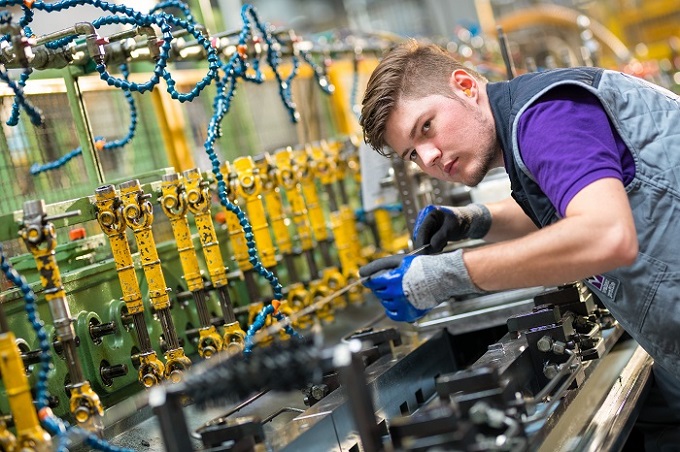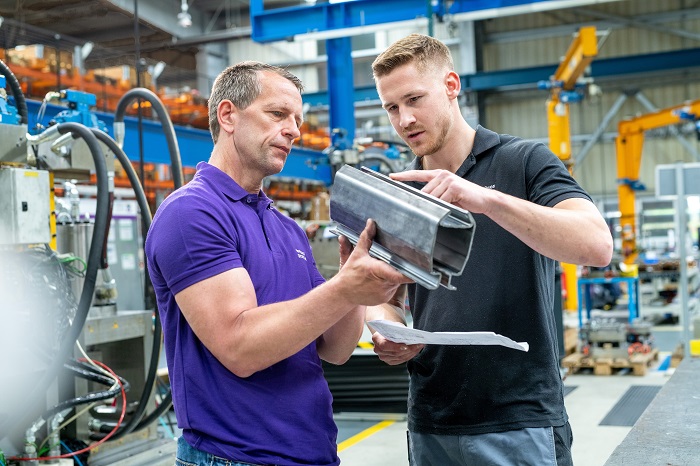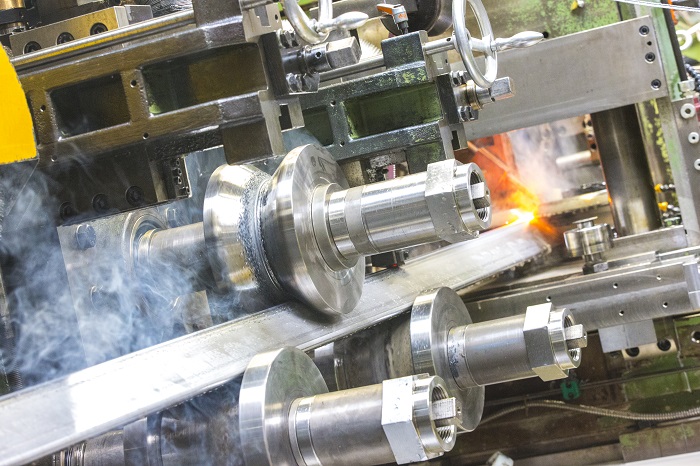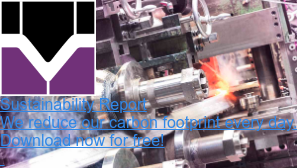The steel industry is not immune to the current and future challenges of climate change and the scarcity of available resources. Initiatives and developments to make production as climate-neutral and resource-conserving as possible are very popular. In line with the European Green Deal, the major steel players want to produce exclusively CO₂-neutral steel by 2050 at the latest, thereby contributing to greater sustainability and a green economy.
However, such a fundamental transformation of our economy cannot be achieved without tapping into productive and sustainable energy sources. The conversion of sunlight into electrical energy using photovoltaics promises the greatest potential. A green approach per se, which should become even greener in the future - thanks to Green Steel, rollforming and Welser Profile.
Green Steel: Steel Production in Transition
At its core, steel is already an environmentally friendly building material due to its longevity and 100 % recyclability. Where it does make a significant impact in emissions is in the upstream production process. As the currently predominant process in steel production, the so-called blast furnace route makes this branch of industry by far the largest direct emitter of CO₂ making up around 10 % of all emissions worldwide, according to the findings of Austria's Climate Neutrality by 2040 study undertaken by the Federal Ministry for Climate Protection, Environment, Energy, Mobility, Innovation and Technology.
Depending on the process, up to around 380 kg of coal or coke are used to produce one ton of steel. The resulting CO₂ emissions are 1.7 tons of CO₂ per ton of crude steel. Complete emission recycling is impossible with this form of production. To avoid ending up in a dead end, the path toward sustainability needs to take a different route.
Green Steel with Hydrogen
As part of their sustainability efforts, steel producers are increasingly looking to rely on hydrogen-based processes instead of traditional coal blast furnaces in order to improve their climate balance and create green steel. This new production method doesn’t affect the quality of the steel, but it does have an effect on the production-related CO₂ emissions.
Green steel refers to both CO₂-reduced and CO₂-neutral steel. As always, the difference is in the details. For the former, measures are taken in the production process resulting in a reduction in CO₂ emissions. For the latter, these emissions are eliminated entirely. It should be noted that completely CO₂-neutral steel production requires the complete abolition of the blast furnace route operated with fossil fuels and the covering of energy-intensive alternative production exclusively with energy from renewable sources. In this case, both hydrogen and green electricity need to be available in sufficient quantities, and at affordable costs.
By the Numbers:
- In Austria, 140,000 tons of hydrogen are consumed every year. The production of this amount alone requires 7 terawatt hours of green electricity. By 2030, a total of 5.7 terawatt hours is planned for households and industry.
- It takes up to 8 kg of water(!) to produce 1 kg of hydrogen.
- Power-to-X is the umbrella term and represents the various sector coupling technologies.
Roll Forming: a Process with a Future
Roll forming, also known as roll profiling, is a process technology for forming different steels into precise and high-quality cross sections. The combination of this flexible and efficient manufacturing process with the environmentally friendly material properties of steel has high potential for the development of sustainable products.
Reducing Components and Process Steps
Traditionally steel was often bought as unprocessed bar stock and processed afterward by sawing, punching, lasering or filing, etc. With roll forming, on the other hand, these several process steps can be combined and a thin sheet metal strip is formed in such a way that it meets individual requirements. This not only speeds up the manufacturing process, but also saves resources and waste. Last but not least, this production method enables more efficient project planning and thus a further reduction in raw material waste and required components.
Steel is becoming more sustainable
Steel stands for strength, stability and durability - material properties that promise a long service life for any construction project it’s used for. This long service life is an important first step towards careful and sustainable use of our valuable raw materials. A second important step is the full recyclability of steel. If the service life of a structure comes to an end after a long time, the materials used can be fed into a new product life cycle in a resource-saving manner by the scrap being melted down again into new steel.
We’ve already looked at the hydrogen-based production method of green steel above. Innovative industry giants such as Voestalpine or ThyssenKrupp are currently driving this development and are looking to make it ready for series production in the next few years. If this plan works, it would not only be a further step towards sustainable steel production, but also a quantum leap toward reducing steel’s Carbon Footprint.
PV Substructure: Playing a Key Role in Energy Transition
Photovoltaics play an increasingly key role in the production of renewable energy, but staying on the path to completely clean energy transition means we can’t just think about the generation of electricity being climate-neutral: The construction of these systems also needs to be green. Finding the right substructure for photovoltaic (PV) systems is a huge part of this.
5 Steps to an energy-efficient Substructure
- Short Delivery Routes
Transporting steel girders and other components across half of Europe is anything but climate-friendly. Finding a manufacturer closer to the sales market is the best option, or suppliers who can guarantee the shortest possible delivery routes to the production site. - Secondary Uses
With some creative thinking, you should be able to find a profitable secondary usage for your substructure. In so-called Agri-PV systems, for example, the photovoltaic modules are mounted on steel supports at a height of a few meters, leaving the area below usable for agricultural production. - Find the Right Foundation
Avoid using concrete as a foundation for the PV system. First of all, the CO₂ footprint is significantly worse compared to steel construction due to the large amount of cement needed. Secondly, valuable farmland and pastures are permanently sealed off by concrete, remaining unusable for agricultural purposes even after the PV system has been dismantled. - Utilize Roll-Formed Components
Roll forming uses significantly less energy compared with traditional sheet steel production, because no process heat is required to form the steel. Plus, this production method uses fewer components, saves resources and avoids waste. - Maximum CO₂ Reduction
The steel should be produced as climate-neutrally as possible. Industrial producers ensure this by using smelting furnaces instead of blast furnaces for steel production and obtaining the electricity for their operation from renewable energy sources. The aim here is the complete decarbonization of the production process, when all industrial gasses are replaced by hydrogen and the hydrogen is produced in a CO₂-neutral manner.
Sustainability at Welser Profile: Green Steel and beyond
At Welser Profile, we see our work as part of a holistic, circular economy, where green steel is processed in a sustainable, functional way for different industries. We’ve set out the framework for this with the following actions and measures:
- Local Sourcing:
We build on the shortest possible routes to our delivery partners. - Specialized Know-How:
Thanks to interlinked process technology, we only need minimal (if any) external finalization steps to finish the roll profiles. - Material Utilization:
We recycle scrap in our steelworks. - Agenda 2026:
By 2026 at the latest, we want to be completely CO₂-neutral with our production. - Paperless Office:
We avoid working with paper, transmitting drawings or data digitally to reduce our carbon footprint with every unprinted page. - Welser Profile Initiatives:
We’re actively working on establishing the production of photovoltaic modules in Europe as well as supporting transnational co-operations such as IPCEI within the framework of joint projects.
Conclusion: Leaping Hurdles on the way to a climate neutral Future
The efforts of leading industry giants, in connection with technical innovations for CO₂ reduction, give hope for transforming current climate-damaging production methods. As is often the case, however, overcoming one hurdle often leads right to the next. Even with the production of green steel technically being possible today, companies and national economies need to ask themselves where, and with what resources, the required hydrogen can be produced - as well as what new dependencies might arise from it. For a real energy turnaround, it will be crucial for Europe, as an industrial power, to become energy independent, and that means bringing photovoltaic production back to the EU.
Read more
Similar articles

Green Steel in Roll Forming – The same thing, only greener?

10 unbeatable Features of roll-formed Steel Components


